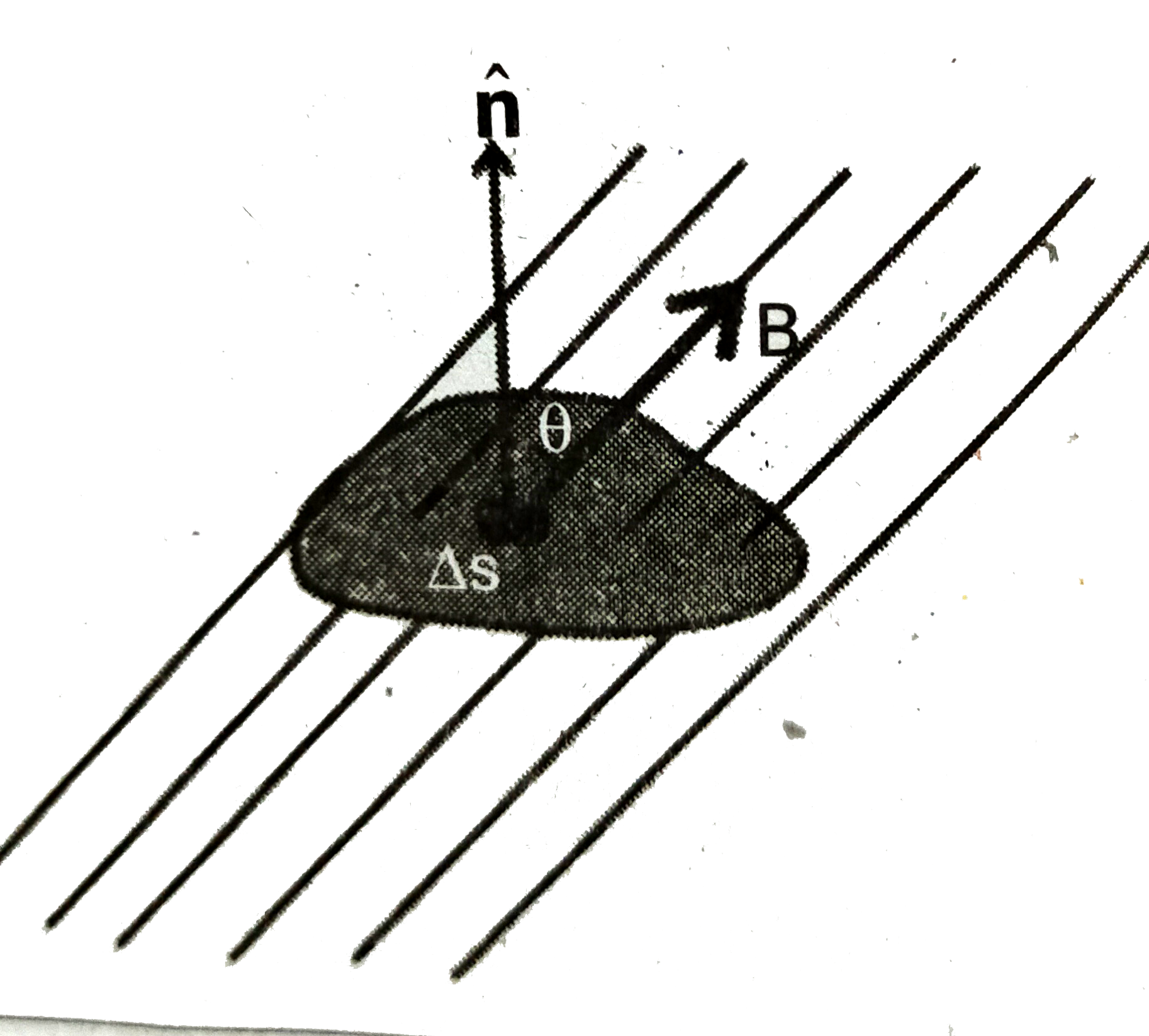Obtain Gauss'Law for magnetism and explain it.
Text Solution
(1) According to Gauss's law for magnetism, the net magnetic flux (ϕB) through any closed surface is always zero.
(2) The law implies that the no. of magnetic field lines leaving any closed surface is always equal to the number of magnetic field lines entering it.
(3) Suppose a closed surface S is held in a uniform magnetic field B. Consider a small vector area element ΔS of this surface as shown in figure.
(4) Magnetic flux through this area element is defined as ΔϕB=B.ΔS. Then the net flux ϕB, is,
ϕB=∑allΔϕB=∑allB.ΔS=0.
(5) If the area elements are really small, we can rewrite this equation as
ϕB=∮B.ds=0 - (1)
(6) Comparing this equation with Gauss's law of electrostatics i.e., electric flux through a closed surface S is given by
ϕE=∮E.ΔS=qε0 - (II) Where q is the electric enclosed by the surface.
(7) In an electric dipole were enclosed by the surface equal and opposite charges in the dipole add upto zero. Therefore, ϕE would be zero.
(8) The fact that ϕB=0 indicates that the simplest magnetic element is a dipole or current loop.
(9) The isolated magnetic poles, called magnetic monopoles are not known to exist.
(10) All magnetic phenomena can be explained interms of an arrangement of magnetic dipoles and/or current loops.
(11) Thus corresponding to equation (II) of Gauss's theorem in electrostatics, we can visualize equation (I) as
ϕB=∫SB.dS=μ0(m)+μ0(−m)=0 where m is strength of N - pole and -m is strength of S - pole of same magnet.
(12) The net magnetic flux through any closed surface is zero.

|
Topper's Solved these Questions
- MAGNETISM AND MATTERBook:VIKRAM PUBLICATION ( ANDHRA PUBLICATION)Chapter:MAGNETISM AND MATTERExercise:Textual Exercises
Explore 27 Videos
- MAGNETISM AND MATTERBook:VIKRAM PUBLICATION ( ANDHRA PUBLICATION)Chapter:MAGNETISM AND MATTERExercise:Additional Exercises
Explore 19 Videos
- MAGNETISM AND MATTERBook:VIKRAM PUBLICATION ( ANDHRA PUBLICATION)Chapter:MAGNETISM AND MATTERExercise:Short Answer Questions
Explore 10 Videos
- ELECTROSTATIC POTENTIAL AND CAPACITANCEBook:VIKRAM PUBLICATION ( ANDHRA PUBLICATION)Chapter:ELECTROSTATIC POTENTIAL AND CAPACITANCEExercise:SAQs
Explore 4 Videos
- MOVING CHARGES AND MAGNETISHMBook:VIKRAM PUBLICATION ( ANDHRA PUBLICATION)Chapter:MOVING CHARGES AND MAGNETISHMExercise:ADDITIONAL EXERCISES
Explore 26 Videos
Similar Questions
Knowledge Check
Assertion : Gauss's law of magnetism is different from that for electrostatics.
Reason Isolated magnetic poles are not known to exist.AIf both assertion and reason are true and reason is the correct explanation of assertion.BIf both assertion and reason are true and reason is not the correct explanation of assertion.CIf assertion is ture but reason is false.DIf both assertion and reason are false.Assertion : Gauss's law of magnetism is different from that for electrostatics.
Reason : Isolated magnetic poles are not known to exist.AIf both assertion and reason are true and reason is the correct explanation of assertion.BIf both assertion and reason are true and reason is not the correct explanation of assertion.CIf assertion is ture but reason is false.DIf both assertion and reason are false.
(a) State Gauss's law for magnetism. Explain its significance.
(b) Write the four important properties of the magnetic field lines due to a bar magnet.
View SolutionWhat is Gauss's law in magnetism? What does it signify?
View Solution(1) Write Gauss'law for magnetism in the form of maxwell equation.
(2) Write the value of 1√μ0ε0
View Solution(1) Write Gauss'law for magnetism in the form of maxwell equation.
(2) Write the value of 1√μ0ε0
View SolutionMagnetic Flux | Gauss law for magnetism | Faraday's Law | Lenz's Law | Calculation of induced current
View SolutionAccording to Gauss's law for magnetism, …………………..through any closed surface is…………………………. .
View Solution

